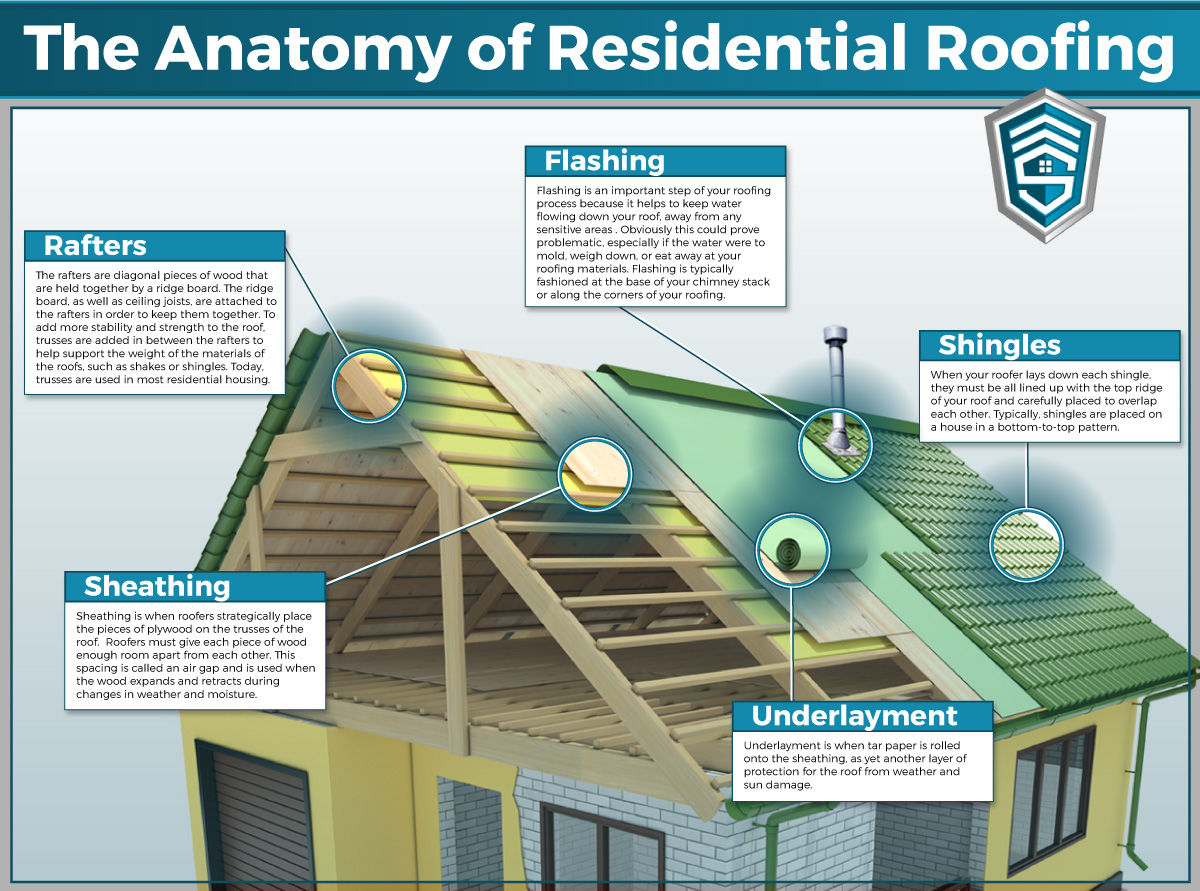The Role Of Roofing Air Flow In An Effective Installment
The Role Of Roofing Air Flow In An Effective Installment
Blog Article
Produced By- https://rollroofing72727.dsiblogger.com/66192863/look-into-the-influence-of-uncertain-climate-on-your-roof-setup-timeline-and-gain-understandings-into-essential-strategies-that-will-certainly-aid-you-browse-the-job-successfully-despite-external-conditions
When you're dealing with a roofing task, you might not think much concerning roof ventilation, however it's more critical than you realize. Reliable air flow aids manage temperature and moisture in your attic, preventing problems like mold and architectural damages. By recognizing exactly how to create and mount a balanced air flow system, you can improve energy performance and prolong the life-span of your roof materials. So, what are the crucial elements to consider throughout installment that can make all the difference?
Significance of Roof Covering Ventilation
Roof covering ventilation plays a vital duty in preserving the general health and wellness of your home. By enabling fresh air to flow with your attic room, it assists manage temperature level and wetness levels. This balance is vital to stop heat accumulation during warm months, which can bring about raised power prices as your air conditioning works overtime.
Moreover, correct ventilation dramatically decreases the risk of moisture-related concerns like mold and mildew and mildew. If humidity levels rise, your home's structural integrity can be compromised, causing pricey repair services. You would not want to take care of deteriorating wood or distorted roof products, right?
Additionally, appropriate ventilation prolongs the life-span of your roof. When warm and moisture are kept in check, your roofing system can perform efficiently, stopping early wear and tear. This implies less migraines and expenses down the line.
Just How Roofing Air Flow Functions
Effective roofing system air flow relies upon the all-natural motion of air to develop an equilibrium in between consumption and exhaust. When you mount vents, you're basically enabling fresh air to enter your attic while making it possible for warm, stagnant air to get away. This process assists manage temperature level and wetness levels, stopping concerns like mold development and roof covering damage.
Intake vents, usually found at the eaves, pull in great air from outdoors. On the other hand, exhaust vents, located near the ridge of the roof covering, allow hot air rise and leave. https://www.greenroofs.com/2020/11/19/tbt-back-to-nature-an-alternative-approach-to-planting-green-roofs/ in temperature level produces a natural air flow, referred to as the pile result. As warm air surges, it creates a vacuum that pulls in cooler air from the lower vents.
To enhance this system, you require to guarantee that the intake and exhaust vents are effectively sized and placed. If the consumption is restricted, you will not attain the wanted ventilation.
Also, insufficient exhaust can catch warmth and wetness, resulting in possible damage.
Secret Installation Factors To Consider
When mounting roof air flow, numerous essential factors to consider can make or break your system's performance. First, you need to examine your roofing system's layout. The pitch, form, and products all affect air flow and ventilation choice. Make sure to choose vents that fit your roofing type and local climate problems.
Next off, take into consideration the placement of your vents. Preferably, you'll desire a well balanced system with intake and exhaust vents positioned for optimal air flow. Area intake vents low on the roof and exhaust vents near the peak to encourage a natural circulation of air. This configuration assists stop wetness buildup and advertises power performance.
Do not ignore insulation. Correct insulation in your attic room avoids warm from leaving and maintains your home comfy. Make certain that insulation doesn't block your vents, as this can hinder airflow.
Finally, think of maintenance. Select ventilation systems that are easy to access for cleaning and evaluation. Regular upkeep ensures your system continues to operate effectively gradually.
Conclusion
Finally, roofing system ventilation is crucial for a successful installation. By ensuring correct air flow, you can prevent warmth accumulation and moisture concerns that bring about pricey damages. When you purposefully setting intake and exhaust vents, you enhance energy performance and lengthen the life-span of your roof. Bear in mind, a well-ventilated roof not only protects your financial investment but additionally boosts your indoor air high quality. So, prioritize air flow to ensure a resilient and cost-effective roof for your home.
